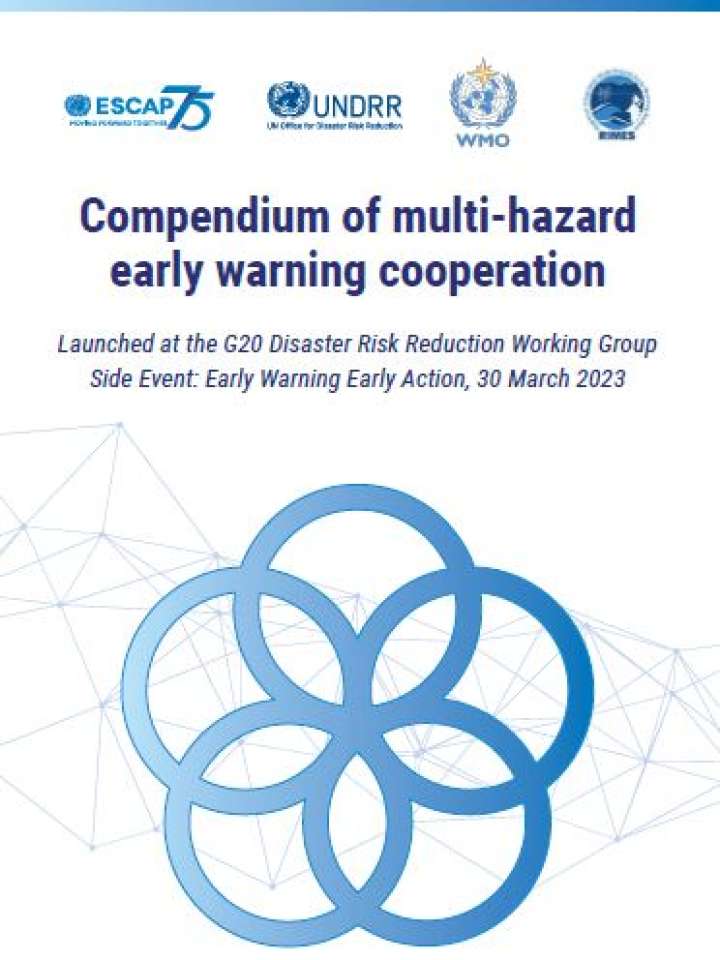Compendium of multi-hazard early warning cooperation
This compendium of multi-hazard early warning cooperation will capitalize on recent publications to identify county-specific challenges and note good practices cooperation arrangements to strengthen forecasting capabilities, early warning coverage, and systems to act on them. This compendium was launched at the G20 Disaster Risk Reduction Working Group Side Event: Early Warning Early Action, 30 March 2023. Investments in early warning systems reduce fatalities and economic losses that are incurred due to disaster events. Since climate hazards do not follow national boundaries, therefore transformative adaptation measures are those that mirror the transboundary nature of disaster risks. Advancing early warning systems, to meet the needs of today and of future generations exposed to intensifying climate hazards, will rely on cooperation.
Section 1.0 provides a clear outline of what constitutes an effective multi-hazard early warning system (MHEWS) and the current challenges being faced for its implementation. This section is largely taken from the forthcoming publication, Words into Action: Multi-Hazard Early Warning Systems. Section 2.0 presents good practices that demonstrate the cooperation of G20 countries to strengthen early warning systems through: political commitments; innovative financing; service provision and institution building; data and technology exchange; transboundary advocacy and action; and tripartite arrangements. Section 3.0 proposes a cooperation framework at the global, regional and transboundary, national and neighbouring levels for deeper engagements among the G20 countries to achieve multi-hazard early warnings system for all. Cooperation should realize a seamless global to local information value chain for early warnings; mobilize proactive, risk-informed, and pioneering investments; scale up appropriate and innovative technological solutions; and incentivize collaboration across all stakeholder groups.
Explore further

